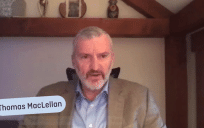![]()
“We can all be creative technologists with the Internet of Things (IoT)” – Will Laugesen, IOT expert from Datacom
IoT is very much a buzzword at the moment. Most people have an idea of what it is and that it is important. However, knowing how to implement it and then how to get the best out of it for communities can be an entirely different matter. This article gives a brief overview as well as some quick ideas on implementation and some things to watch out for.
First, to make sure we are all on the same page, what is IoT? Laugesen describes it as a ‘‘network of interconnected devices which can collect and transmit data.”
Many IoT devices are on a LPWAN (Low Powered Wide Area Network) network. LPWAN can be thought of as ‘narrowband’ – the opposite of the broadband used for internet connections. Narrowband can cheaply transmit small amounts of data over long distances using little power which makes it perfect for IoT. Batteries in some of the devices can last for up to ten years so they are great value.
Simple enough right? What’s more, many people don’t realize it but IoT has been around for years under different guises. The term was coined in 1999 by Proctor and Gamble and hit mainstream in 2014 with items such as smartwatches and fitness trackers. Nowadays smart fridges, E-Bikes and smart meters are also the norm in many households.
Smart city devices commonly used by agencies which are cheap-to-buy and easily accessible include:
- Bin sensors which compact trash and measure when they are full so agencies know when to empty them
- Motion sensors are a good alternative to CCTV in places without power as they can sense when people are entering places they shouldn’t be
- Air quality sensors help with gas leaks or pollution in big cities. They can also be used to detect fires in properties and alert landlord
- Fire hydrant sensors to make sure there is enough water for firemen
- Street lighting sensors which save energy as they only turn on when they sense movement rather than being on all night
- Water level sensors to make sure there is enough water in lakes and rivers
- Weather sensors to provide more accurate weather data which agencies can view and act on
- Parking lot sensors which let people know if a spot is available or not
- Road sensors to track speed are cheaper than traditional cameras or tracking number plates via machine learning. Agencies can also check water on the road with a sensor and display different warning messages to drivers based on that.
- Point to point sensors to track movement of agency-provided E-Bikes
Eight top tips
Many people think that IoT devices will be tricky to implement. It’s not the case and anyone could come up with a new idea or interesting way to save. As Laugesen said, “We can all be creative technologists with IoT.”
- Look for issues which need solving in the community. Where could IoT be used to make the biggest impact? It is important not to do this the other way round. If a device is chosen first, without research, the solution will be shoehorned to fit it and it won’t work. Consider setting up an innovation lab where citizens can pitch their smart city ideas.
- Consider stakeholder perception of these solutions. Some ideas which actually help communities, e.g. smart meters for tracking energy usage and saving money, can actually make people feel like they are being monitored. Or if trying to improve safety amongst people doing building inspections in dangerous places, it would be better to attach a sensor to their hardhat so they are only monitored whilst doing the dangerous activity rather than all the time so its noninvasive.
- Work out what data can be collected from the sensors and and how it can be presented in a way which is useful for all stakeholders. This may involve combining data from multiple sources. Also ensure the solution is scalable, e.g. will it still work when there are multiple sensors across a whole city? Solutions like Power BI are easy to use as charts can be just dragged and dropped onto the dashboard
- Make a plan with metrics and ask experts to pick holes in it before refining. Common limitations with LPWAN include:
- Some set ups only allow for one way communication – for example, a lot of sensors would just tell the council when water levels are low. In an ideal world they would open a floodgate to refill it with water too.
- It doesn’t work underground, in basements or underwater, etc. Broadband or a wired connection would need to be used in these instances.
- Point-to-point sensors don’t show data in real time as it would drain too much too much battery – they just show it historically.
- Choose a network provider. Competition is about to be hot for this. Up until now there have been a limited number of providers with other companies scared to enter the market place in case they back the wrong type of network. However times are changing and more and more companies are entering the market place. They have to invest now for fear of getting left behind. Common LPWAN networks used include SigFox, LoRa, RPMA, Symphony Link, and Weightless.
- Start small and soon. Even the best laid plans fail. Experiment now using prototypes on a small section of the community and then scale up. If it doesn’t work out then less money has been lost. Prototyping kits – programmable boards which developers can easily set up to devices – can be bought for as little as $40 online.
- Choose a technology stack.This is the software which provides the infrastructure for your devices. Microsoft Azure IoT Hub or Amazon AWS are both good options although there are plenty more out there.
- Work with an expert to put in place a strategic plan for IoT security. The potential for security related disasters are high due to the technology still being fairly new. If street light sensors were hacked, for example, cities could be plunged into darkness or if traffic sensors were tampered with, city centres could end up totally gridlocked. Use registered devices. They have to be authorised by the LPWAN provider you are using so will have been built to a standard and will have passed security checks
Hopefully this was an easy to understand introduction to IoT. Want to know more and get Govloop certified? Check out this short Govloop course.
Caroline White is part of the GovLoop Featured Blogger program, where we feature blog posts by government voices from all across the country (and world!). To see more Featured Blogger posts, click here.





Leave a Reply
You must be logged in to post a comment.